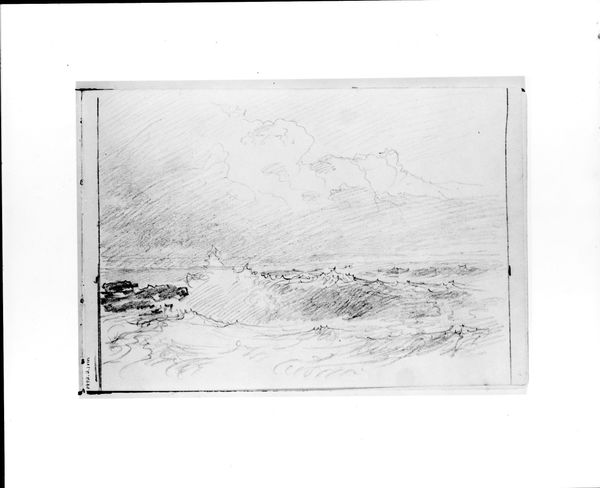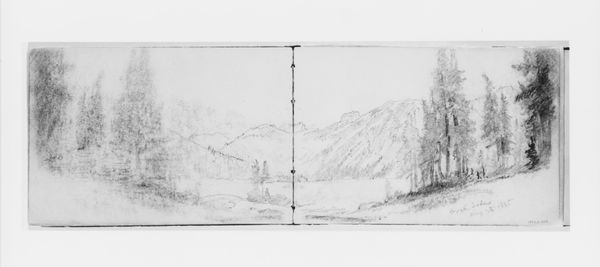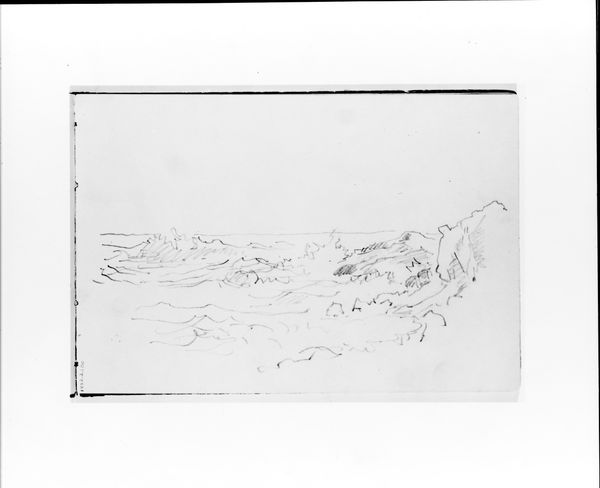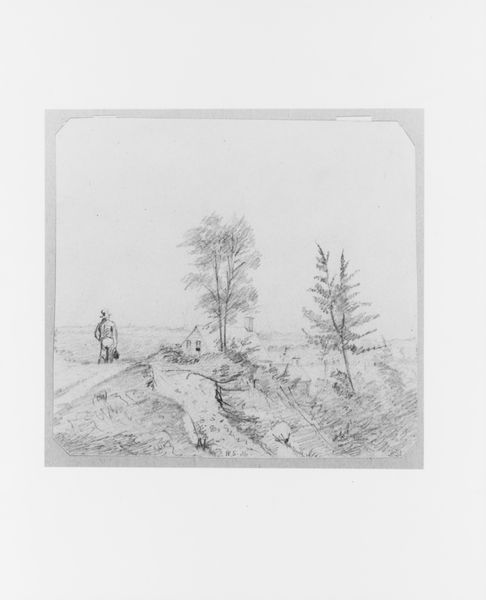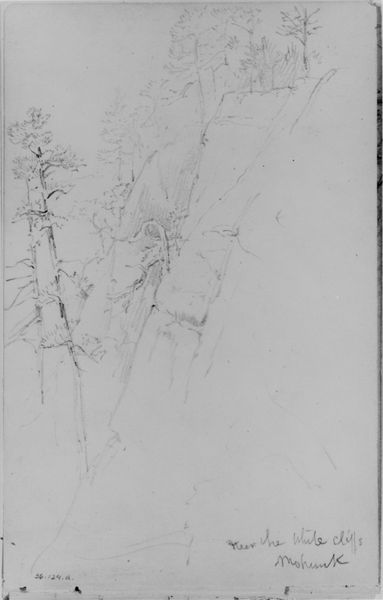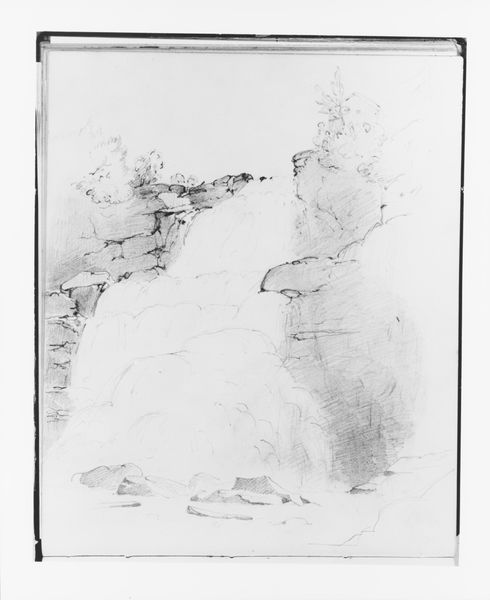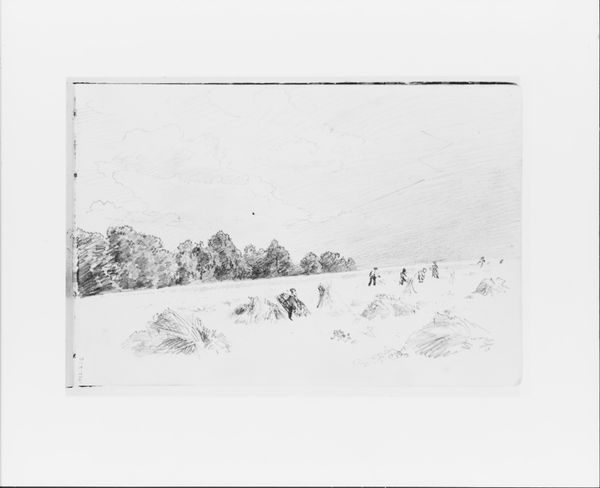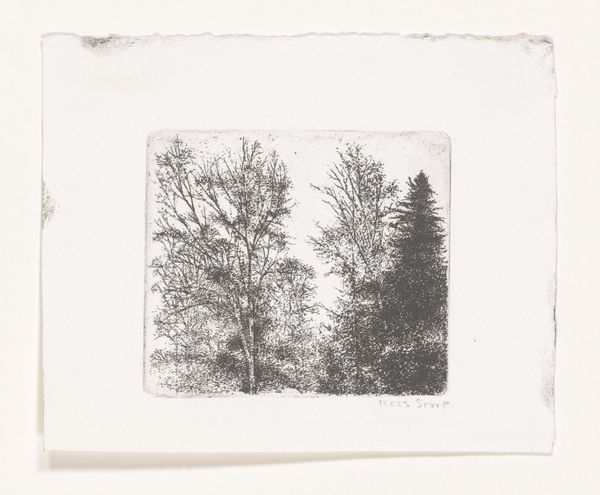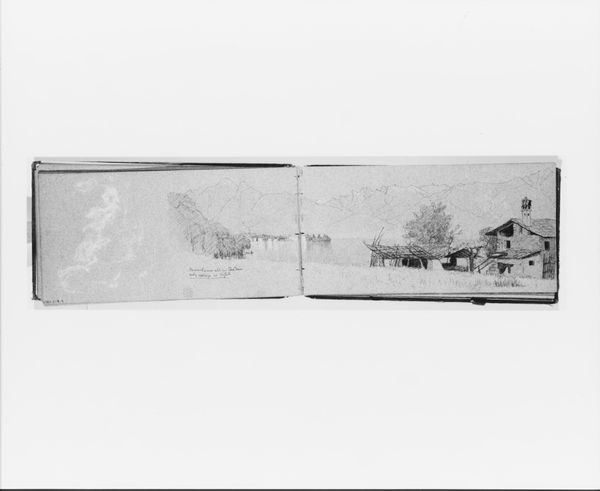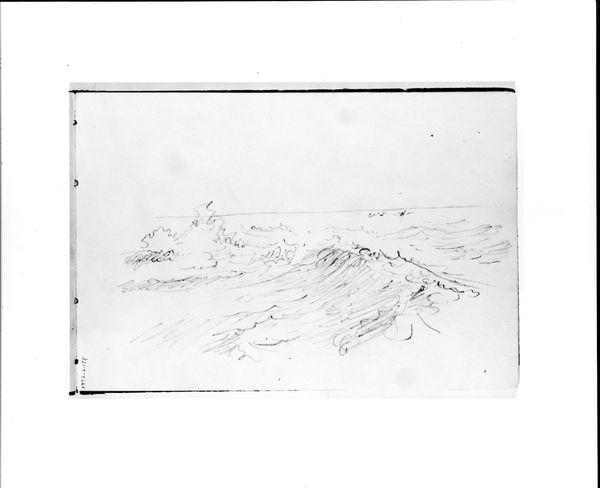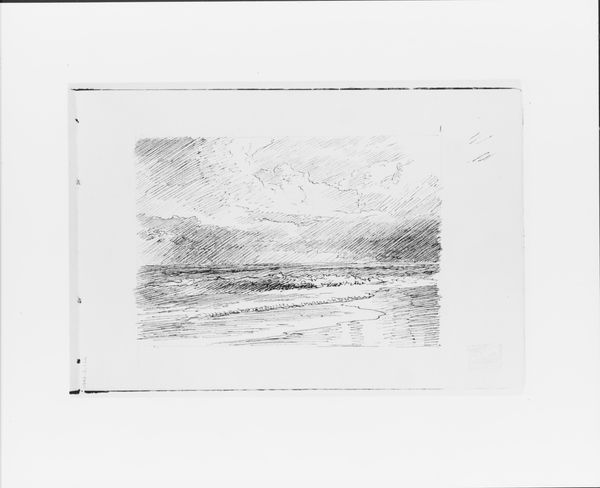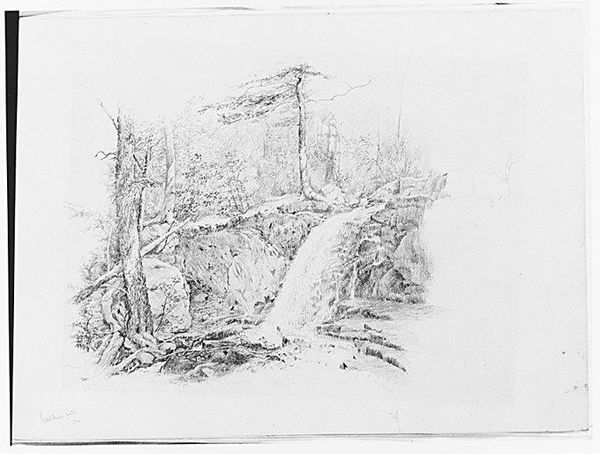![Mountain Landscape with Lake in Foreground [Mount Tacoma?] (from Sketchbook X) by William Trost Richards](/_next/image?url=https%3A%2F%2Fd2w8kbdekdi1gv.cloudfront.net%2FeyJidWNrZXQiOiAiYXJ0ZXJhLWltYWdlcy1idWNrZXQiLCAia2V5IjogImFydHdvcmtzLzFhMWFkZTZjLWYyNTEtNDFkMi1hMzQ5LWYwYTllMWY4MGM2MS8xYTFhZGU2Yy1mMjUxLTQxZDItYTM0OS1mMGE5ZTFmODBjNjFfZnVsbC5qcGciLCAiZWRpdHMiOiB7InJlc2l6ZSI6IHsid2lkdGgiOiAxOTIwLCAiaGVpZ2h0IjogMTkyMCwgImZpdCI6ICJpbnNpZGUifX19&w=3840&q=75)
Mountain Landscape with Lake in Foreground [Mount Tacoma?] (from Sketchbook X) 1885
0:00
0:00
Dimensions: 5 x 7 1/2 in. (12.7 x 19.1 cm)
Copyright: Public Domain
Editor: So, this is William Trost Richards' "Mountain Landscape with Lake in Foreground," believed to be Mount Tacoma, dating back to 1885. It's a drawing using charcoal and pencil. I'm struck by the tranquility; it's almost meditative, how the mountain and trees reflect in the water. What do you see in this piece? Curator: I see more than just tranquility; I see a conscious engagement with the rhetoric of American landscape painting in the late 19th century. Think about the Hudson River School, the anxieties around westward expansion, industrialization, and the changing face of the American wilderness. Is Richards simply capturing a scene, or is he participating in a larger cultural conversation about national identity and the environment? Editor: So you think that this reflects something about American identity? I mean I could imagine how in a grand oil painting the sheer scale could have spoken to that but what about here, in a drawing in charcoal, especially in a sketch-book? Curator: Exactly! The fact that it's a sketchbook drawing complicates things. Is it a study for a larger, more 'important' painting, a personal reflection, or something else entirely? How might its intended audience – likely small, intimate – affect its meaning compared to a public-facing, monumental canvas? Editor: That’s a good point; I didn’t think of it that way, but I wonder whether this points to an idealized and nostalgic idea of the American landscape that maybe wasn’t accurate in reality. Curator: Precisely. It makes you question what role artists played at this time. Is it purely celebratory or does this image capture the sense of loss which was felt in reaction to this growth, this sense of ‘Manifest Destiny?’ What did artists want the population to take away when seeing such images? How were national institutions complicit? Editor: Thanks, this has definitely given me a whole new perspective on how to look at landscapes of this time. Curator: It goes to show that what seems to be 'just' a pretty picture often carries far greater weight and implications if you think about the cultural context in which art is displayed.
Comments
No comments
Be the first to comment and join the conversation on the ultimate creative platform.
